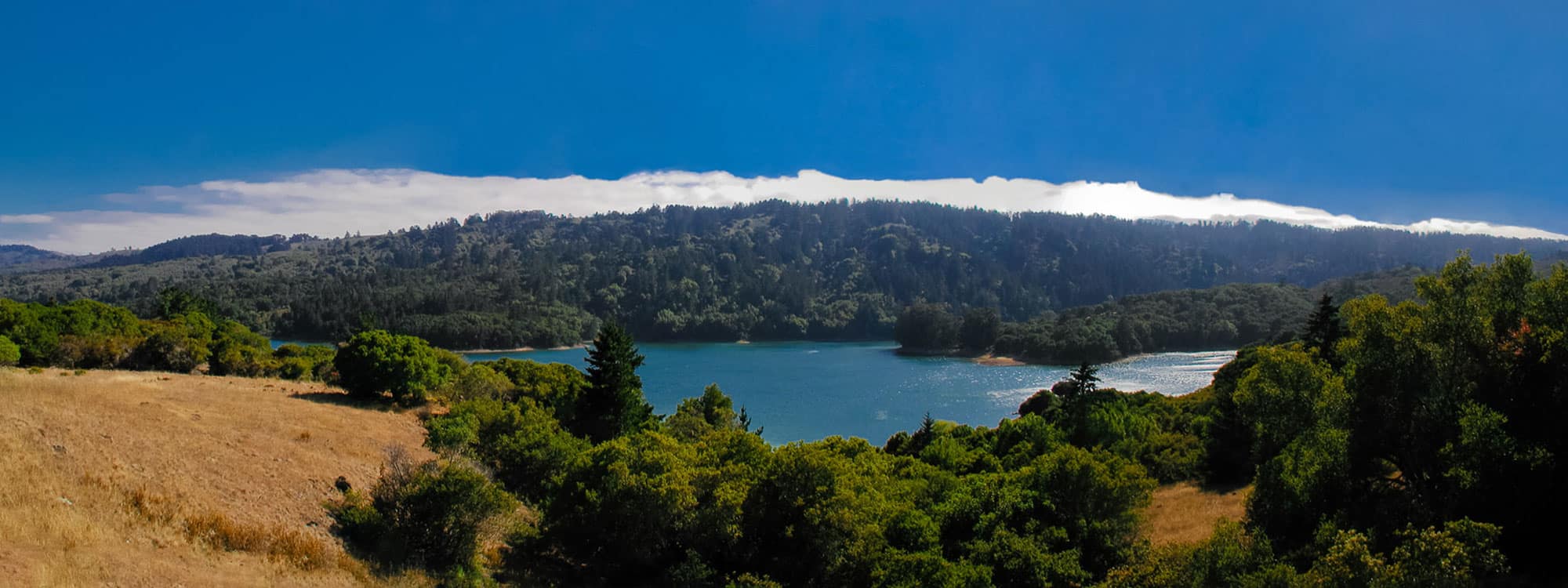On December 5th, I sat on a panel for the Silicon Valley Community Foundation’s San Mateo County Water Leaders Briefing. At the briefing, I spoke about San Mateo County’s water supply and how to sustain it over time.
Water and conservation experts who joined me on the panel included City of East Palo Alto Council Member, Carlos Romero, and Charles Ice from the San Mateo County Environmental Health Groundwater Protection and Sustainability Program. I lead the discussion on how the area’s land-use policies affect water resources and offered valuable insight on how Greenbelt Alliance is working to ensure that the right development happens in the right places in order to protect the area’s water supply.
What is San Mateo County’s current water supply situation?
San Mateo County gets nearly 90% of its municipal water from the San Francisco Regional Water System, run by the San Francisco Public Utilities Commission. The vast majority of this comes from the Hetch Hetchy Reservoir in the Sierras, with some also coming from the local Crystal Springs watershed and Calaveras Reservoir watersheds in Alameda and Santa Clara counties.
San Mateo County is unique in the lack of its own water wholesaler and is presumably the least reliant on locally-sourced water of any Bay Area county other than San Francisco. Being so reliant on imported water could make it especially vulnerable to the loss of Sierra snowpack water due to climate change.
There are opportunities for San Mateo County to do more with local resources, such as using its groundwater resources and aquifers. To do this, however, we must address that there are 6,424 acres of the county’s land above groundwater at risk of development. The solution to this is to advocate for smart growth land-use policies, which benefit these water resources.
What is Greenbelt Alliance doing to achieve a resilient San Mateo County water supply?
Greenbelt Alliance is making the case in San Mateo County, and throughout the Bay Area, that smart growth land-use policies benefit water resources. There are three key arguments that support this case:
- Smart growth or infill development uses less water. A recent report found that a new home in an infill development setting uses about 35% less water than homes in sprawl developments.
- Directing new development into our region’s existing urban footprint means we will need fewer pipes, which means less water loss in leaking infrastructure. Every year 228 billion gallons of water is lost due to leaks in underground pipes. That’s enough water to supply Los Angeles for a year.
- Across the nine-county Bay Area, around 1.2 million acres—more than a quarter of the land in the region—serves to recharge groundwater basins, rivers, and reservoirs. Of these lands, only 20% are off limits from development with 200,000 acres in direct threat of development. With water from the Sierras likely being more uncertain in the future, ensuring that these local water resource lands are protected from development becomes more and more critical.
By protecting open spaces outside of cities from sprawl development, we are protecting water quality and quantity, especially groundwater aquifers. Focusing development within existing cities and towns provides an alternative to water-foolish sprawl, and minimizes per-household water use.
Why should San Mateo County be invested in the success of Greenbelt Alliance’s work?
Water keeps us all alive, it moves and sustains us, and the quality of life in each individual city will be affected by the overall quality and sustainability of life in our region. Each smart growth and conservation victory in San Mateo County is a win for water and for the environment. While Greenbelt Alliance is proudly non-partisan, the incoming federal administration will clearly create significant environmental challenges. The Bay Area has a unique opportunity to be a shining example of how to uphold our environmental vision of a sustainable future. Greenbelt Alliance is the Bay Area’s champion for this vision.
Photo: Chris Alleyene-Chin via Flickr



